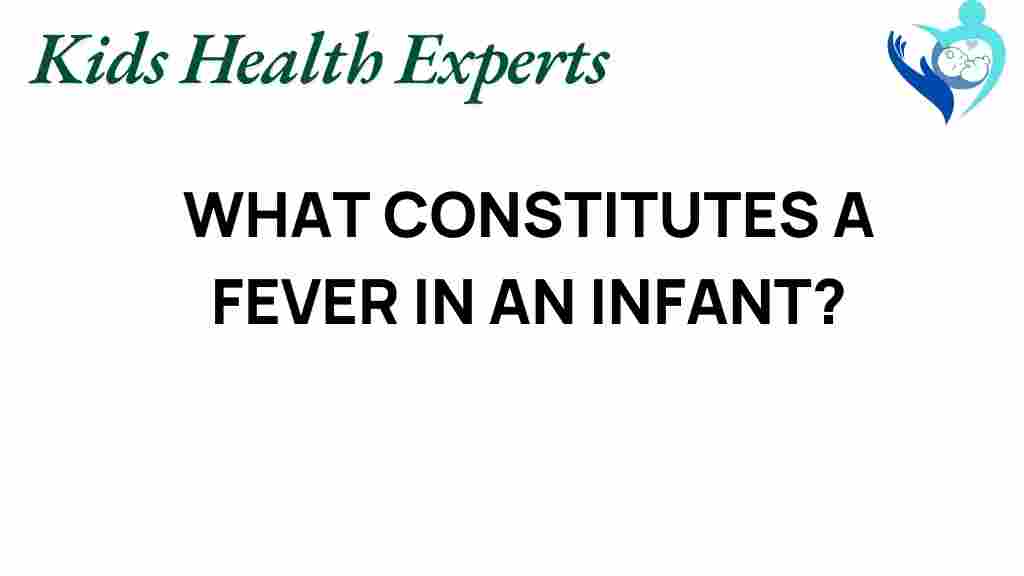Unraveling the Mystery: What Constitutes a Fever in Infants?
As a parent, understanding your infant’s health is paramount, especially when it comes to recognizing fever. Fever is often the body’s natural response to infection or illness, but it can also be a source of anxiety for many parents. In this comprehensive guide, we will explore what constitutes a fever in infants, the pediatric guidelines for measuring temperature, common symptoms associated with fever, and essential care tips for parents. By the end of this article, you will be better equipped to manage your child’s wellness and when to seek medical advice.
Defining Fever in Infants
According to pediatric guidelines, fever in infants is typically defined as a body temperature of 100.4°F (38°C) or higher. It is important for parents to understand how to accurately measure an infant’s temperature, as this is the first step in determining whether your child has a fever.
How to Measure Temperature in Infants
There are several methods to measure temperature in infants:
- Rectal Thermometry: This is considered the most accurate method for infants. A digital thermometer should be used, and it is recommended to insert the thermometer gently into the rectum about half an inch to one inch.
- Axillary Thermometry: This method involves placing the thermometer in the armpit. However, it is less reliable than rectal measurements.
- Temporal Artery Thermometers: These are non-invasive devices that measure the temperature on the forehead and are becoming increasingly popular among parents.
- Ear Thermometers: These can be used for infants over six months but are less accurate in very young children.
Regardless of the method used, it is crucial to follow the manufacturer’s instructions carefully for accurate readings.
Common Symptoms Associated with Fever
Fever is typically accompanied by various symptoms that may indicate an underlying illness. Parents should be vigilant for the following signs:
- Increased irritability or fussiness
- Changes in feeding patterns
- Excessive sleepiness or lethargy
- Cold hands and feet, even when the body is hot
- Skin rash or unusual marks
- Difficulty breathing or persistent coughing
Recognizing these symptoms early can be vital in managing your infant’s health effectively.
When to Seek Medical Advice
As a parent, knowing when to seek medical advice is crucial for your infant’s wellness. Here are the guidelines to help you determine when it’s time to contact a healthcare professional:
- If your infant is younger than three months and has a fever of 100.4°F (38°C) or higher.
- If your infant is between three and six months old and has a fever of 101°F (38.3°C) or higher.
- If your infant is older than six months and has a fever of 103°F (39.4°C) or higher.
- If your infant exhibits any concerning symptoms such as difficulty breathing, persistent vomiting, or unusual lethargy.
In any case of doubt, it is always better to err on the side of caution and consult with a healthcare provider.
Step-by-Step Care for a Feverish Infant
When your infant has a fever, the following steps can help you provide appropriate care:
Step 1: Monitor Temperature Regularly
Keep a close eye on your child’s temperature and note any fluctuations. This will help you provide accurate information to your pediatrician if needed.
Step 2: Keep Your Infant Comfortable
Dress your infant in lightweight clothing and ensure the room is at a comfortable temperature. Avoid bundling them up, as overheating can worsen the fever.
Step 3: Hydration is Key
Ensure your infant stays hydrated, especially if they are refusing to eat or drink. Offer breast milk, formula, or electrolyte solutions as age-appropriate.
Step 4: Administer Medication if Recommended
If your infant is uncomfortable due to fever, you may consider administering fever-reducing medication, such as acetaminophen or ibuprofen. Always consult your pediatrician before giving any medication to ensure it is appropriate for your infant’s age and weight.
Step 5: Keep a Record
Document your infant’s temperature readings and any symptoms they exhibit. This information will be invaluable when discussing your child’s health with a healthcare provider.
Troubleshooting Tips for Parents
As a parent, it’s natural to feel overwhelmed when faced with an infant’s fever. Here are some troubleshooting tips to help you navigate this experience:
- Stay Calm: Your anxiety can affect your infant, so try to remain calm and collected.
- Check the Thermometer: Ensure your thermometer is functioning correctly. A faulty thermometer can give inaccurate readings.
- Consult Reliable Sources: Utilize trusted resources such as the American Academy of Pediatrics for guidance on infant health and fever management.
- Communicate with Caregivers: Ensure anyone caring for your child is aware of their condition and any necessary care instructions.
Conclusion
Understanding fever in infants is crucial for every parent’s journey in promoting their child’s health and wellness. Recognizing the signs of fever, knowing how to measure temperature accurately, and being aware of when to seek medical advice can empower parents to manage their infant’s health effectively. Always prioritize your child’s comfort and hydration, and don’t hesitate to consult with healthcare professionals for guidance. With the right knowledge and preparation, parents can navigate the challenges of fever confidently, ensuring their little ones receive the care they need.
For more information on infant health and wellness, check out our comprehensive guide.
This article is in the category Conditions and created by KidsHealthExperts Team
